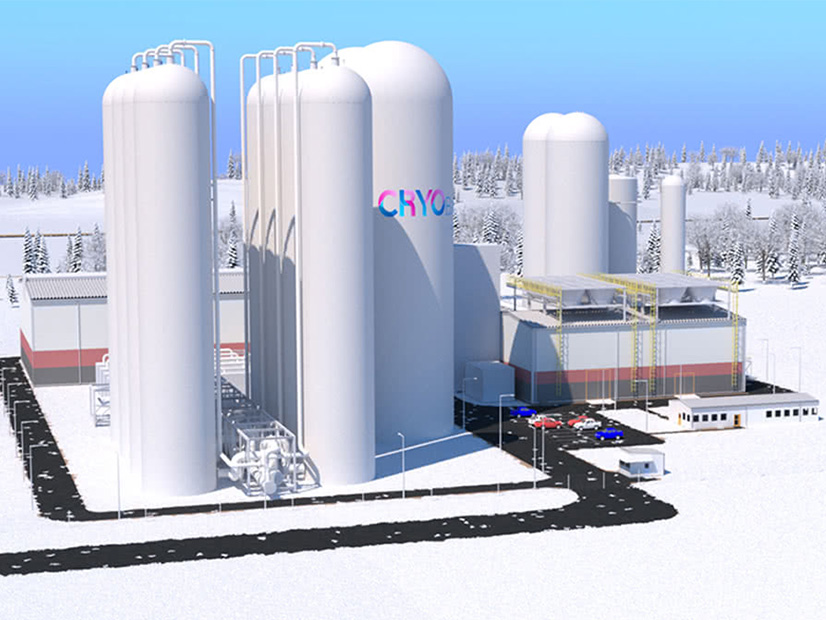Jason Handley, Duke Energy’s director of emerging technology, feels pretty good about the utility’s ability to meet its goal of reducing carbon emissions by 50% and eliminating methane emissions from its natural gas business by 2030. Reaching net-zero emissions by 2050, however, is going to require technology that hasn’t been proven yet.
“We think we have a really good line of sight on current technologies that are going to help us meet our 2030 targets,” he said during a panel discussion Thursday at the virtual segment of the Energy Storage Association’s annual conference Thursday. “But if we’re going to achieve our net-zero goals in 2050, we’re going to need a variety of flexible storage resources, including multiple types of long-duration storage.”
Storage is the key to avoiding the “heartache” of curtailing renewables, said Balki Iyer, chief commercial officer for Eos Energy Enterprises.
“The last year alone there was close to 100 TWh of renewables that was curtailed,” said Iyer, who joined Handley and Highview Power CEO Javier Cavada on the panel. “That’s enough to power all of the homes in Texas for a year. That’s not a good sign.”
Handley said Duke has done trials of 15 storage projects with 10 different chemistries, including work with Eos, which uses zinc hybrid cathodes.
Eos Energy

Founded in 2008 under the name Grid Storage Technologies, Eos initially focused on developing the chemistry of its aqueous zinc battery, which it says has two advantages over conventional lithium-ion technology. It uses commodities from non-rare earth and non-conflict minerals that are abundant and recyclable, while Li-ion batteries require lithium and cobalt, which are produced in few countries and could be prone to supply constraints. Unlike Li-ion batteries, which can overheat and explode, Eos says its system is nonflammable.
The company, which began commercial shipments in 2018, went public in November. Through 2020 it had delivered 10 systems totaling 2,500 batteries and 5 MWh. Its current generation product can deliver up to 12 hours of continuous power, it says.
Its customers include San Diego Gas & Electric and Duke, the latter of which was its biggest customer in fiscal year 2019, accounting for 26% of its revenue.
In January it announced its largest order ever, a $20 million deal to supply long-duration storage to developer EnerSmart, to provide at least 90 MWh of storage over two years. The first project, for 9 MWh of storage in El Cajon, Calif., is scheduled to be installed in the fourth quarter.
Highview Power

Highview says its cryogenic energy storage provides scale like that of pumped hydro, capable of providing four hours to four weeks of power. It cools air to -196 degrees Celsius (-320 F) to liquefy it before storing it in low-pressure insulated tanks. The liquid returns quickly to gas when exposed to ambient temperatures, causing a 700-fold expansion in volume, which is used to drive a turbine and create electricity without combustion.
It is building a 50-MW/250-MWh plant in Carrington, England, that is expected to enter commercial operation next year. It is also developing facility in Northern Vermont that it says will be a minimum of 50 MW and provide more than eight hours of storage to address transmission congestion at the Sheffield-Highgate Export Interface.
In February it closed a $70 million round of funding from investors including Sumitomo Heavy Industries. It entered 2021 with a 4-GWh pipeline of storage projects in the U.S., Europe and Latin America.
Duke’s Requirements
“It’s really exciting to hear about the gains they’re making in their technologies,” Handley said. “Because when we start out looking for long-duration storage technologies, it’s very simple: We’re looking for safe, reliable, cost-effective, sustainable and flexible [technologies]. Flexible is going to be a key for us as we move forward because we are starting to need that ability to time shift different types of our loads.”
Other use cases Handley envisions for long duration include transmission and distribution deferrals. That “is going to be huge. We’re looking at doing non-wires alternative projects. And also the spot solutions for transmission congestion relief. And of course, as we’ve seen, there’s always backup power needs.
“We also understand that these new technologies are going to need time to mature,” he added. “In order for Duke or any company to really invest in these systems, they’re going to have to be field-proven.”
Turning Coal Plants into Long-duration Storage?
Duke also is involved with Google spinoff Malta Inc. in a Department of Energy-funded project to determine if retired coal plants could be repowered long-duration storage using renewable power and Malta’s molten salt energy storage technology.
In addition to taking advantage of existing transmission infrastructure, Malta and Duke say the concept could provide the same grid stability benefits from rotational inertia as the retiring thermal generation.
“The concept that we’re going for is to be able to use the incumbent fossil fuel workforce without relocation and minimal retaining,” Handley said. “The engineering study that’s going to comes out of that is really going to help us lean toward repurposing and reusing some of these existing facilities that we have for renewable/decarbonized purposes.”
Malta, launched by Google parent Alphabet’s “moonshot factory” X, announced in February it had raised $50 million in Series B funding from investors including Bill Gates’ Breakthrough Energy Ventures to bring its technology to market.





